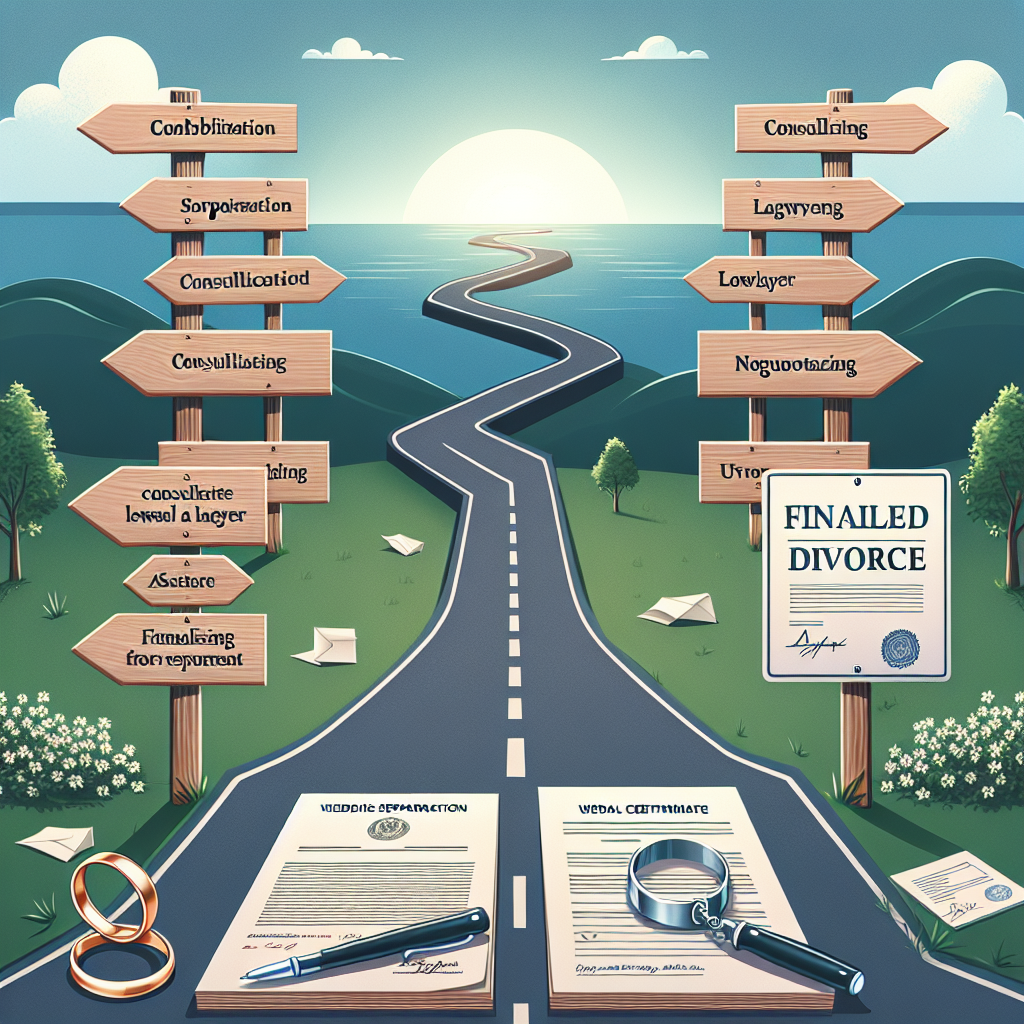Divorce can be one of the most challenging experiences in life, not only emotionally but also legally. If you’re considering this step or are already in the midst of the process, understanding what to expect can help ease some of the anxiety. This article serves as a beginner’s roadmap to navigating the divorce process, breaking down complex legal terms and procedures into easily digestible sections.
Understanding Divorce: What Is It?
Before diving into the legal aspects, let’s clarify what divorce really means. Divorce is the legal dissolution of a marriage, marking the end of a marital union. It is not merely an emotional or personal separation; it involves legal procedures that define the rights and responsibilities of each spouse moving forward.
Why Divorce Happens: Common Reasons
Understanding the reasons behind divorce can provide valuable context. Some common reasons for separation include:
- Communication Issues: Persistent misunderstandings can erode the foundation of any relationship.
- Financial Strain: Disagreements over money management can lead to significant tension.
- Infidelity: Breaches of trust can be devastating and often irreparable.
- Growing Apart: Sometimes, couples simply find they no longer share the same life goals or values.
While understanding these reasons can be helpful, it’s also essential to recognize that every couple’s circumstances are unique.
The Initial Steps: Preparing for Divorce
1. Self-Reflection and Emotional Preparation
Before making the decision to file for divorce, take time for self-reflection. Ask yourself if this is truly the right path for you. Consider speaking with a therapist or trusted friends for emotional support.
2. Gathering Important Documents
Preparation is key. Start by compiling important documents such as:
- Financial Statements: Bank statements, credit card bills, tax returns.
- Legal Papers: Marriage certificate, prenuptial agreements, or domestic partnership records.
- Assets and Liabilities: A clear picture of your shared and individual assets will make negotiations smoother.
Filing for Divorce: The Legal Process Begins
Understanding the Types of Divorce
There are different types of divorces, depending on your situation:
- Uncontested Divorce: Both partners agree on all terms, making the process faster and less expensive.
- Contested Divorce: Disagreements regarding custody, assets, or other issues can complicate the process and require court intervention.
1. Filing the Petition
The divorce process begins when one spouse files a petition for divorce in court. It’s essential to follow your state’s regulations when filing, as legal requirements can vary significantly.
2. Serving the Other Spouse
Once the petition is filed, the next step is formally serving the divorce papers to the other spouse, which can be done by a process server or via mail, depending on local laws.
Navigating the Divorce Process: Key Stages
1. Response and Negotiation
After receiving the divorce papers, the other spouse has a specific time to respond. If they contest the divorce, negotiations begin. This is often when lawyers come into play, especially for contested cases.
2. Discovery
This phase involves exchanging relevant information and documents. Discovery ensures that both parties are fully informed about financial and personal assets.
3. Mediation
Many states require couples to attempt mediation before going to trial. During mediation, a neutral third party helps both partners reach an amicable agreement on issues like property division, child custody, and support payments.
The Final Stages: Settlement and Decree
1. Reaching a Settlement
If both parties can reach an agreement, they will draft a settlement document detailing all terms. This document is then submitted to the court for approval.
2. Final Hearing
If you cannot agree, your case may go to court. During the final hearing, a judge will listen to both sides and make the final decisions regarding custody, support, and asset division.
3. Finalizing the Divorce Decree
Once the court approves the settlement or issues a judgment, the divorce is finalized. You’ll receive a divorce decree outlining all decisions made by the court.
Life After Divorce: Moving Forward
Divorce signifies the end of a chapter, but it’s also the beginning of a new one. Give yourself time to heal and adjust to your new reality. Embrace self-care, lean on your support system, and consider professional help if you need it.
Conclusion: Taking the First Steps with Confidence
While the divorce process can feel overwhelming, being informed is your greatest ally. Approach the process methodically, take advantage of support resources, and prioritize your well-being. No matter how daunting it may seem, you have the strength to navigate this journey and emerge on the other side with renewed hope and independence.
By organizing your research and emotions, you’re taking an essential step towards reclaiming your life after divorce. Whether you’re just starting to think about separation or are knee-deep in proceedings, remember: knowledge, preparation, and support are vital keys to navigating the complex emotional and legal landscapes of divorce.


